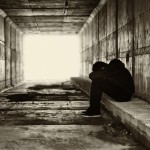Light therapy is as effective as antidepressants for treating winter-based seasonal affective disorder (SAD)—a depressive disorder associated with the darker, colder months of the year—and the American Psychiatric Association agrees this treatment is also safe for nonseasonal major depressive disorder too, according to a report in The New York Times.
Findings from a 2006 trial with 96 SAD sufferers showed that receiving light therapy—30 to 45 minutes a day of bright artificial light each morning—was just as effective as popping Prozac. What’s more, light therapy also acted faster, providing relief within a week, and with fewer side effects.
“Light does more than just enable us to see,” said Norman Rosenthal, MD, a researcher who was one of the first to study SAD. Light also affects the body’s production of melatonin, serotonin and epinephrine, hormones that help the brain regulate mood, energy and appetite.
When people treat their SAD with light therapy, they get doses of bright-light exposure from special light boxes (usually available in health food or lighting fixture stores). These light boxes cost about $200 or can be rented.
Besides the price—often cheaper than meds and doctor visits—what’s convenient is you don’t need a prescription to use a light box, although experts recommend speaking to your doctor first. What’s key is not to stare directly into the light box, and if you have an eye condition you shouldn’t use one without first talking to your eye doctor.
Alternatively, you can get light therapy from the sun by getting out more during the day where you live—or, if possible, by vacationing somewhere sunny.
Click here to read more about SAD and other types of depressive disorders.






Comments
Comments